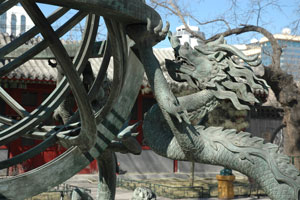
5. The Chinese Heaven

The Jesuit mathematicians of the 17th century achieved their highest official recognition at the Beijing court as astronomers. Both Ferdinand Verbiest and his predecessor Schall von Bell were appointed to direct the Imperial Board of Astronomy where they were responsible for observational and calendrical reforms.
Their appointments and initiatives were only possible because China already had a long-established tradition of astronomy in the service of the state. With their own experience of close involvement in the Gregorian calendar reform of 16th-century Europe, Jesuit mathematicians were enlisted to help tackle the recognised inadequacies of current astronomical prediction in China. The resulting set of texts was reissued in 1645 as one of the first initiatives of the new Qing dynasty and given a new title, Calendar Compendium following the New Western Method.
Astronomy had much more than simply a practical significance in Chinese culture. While the calendar connected the celestial and terrestrial realms through the seasons of the year, the Emperor embodied and was ultimately responsible for ensuring harmony between heaven and earth. According to Confucius, the ruler rests motionless at the centre of the state just as the pole star remains fixed in the sky while perpetually circled by all the other lesser stars.